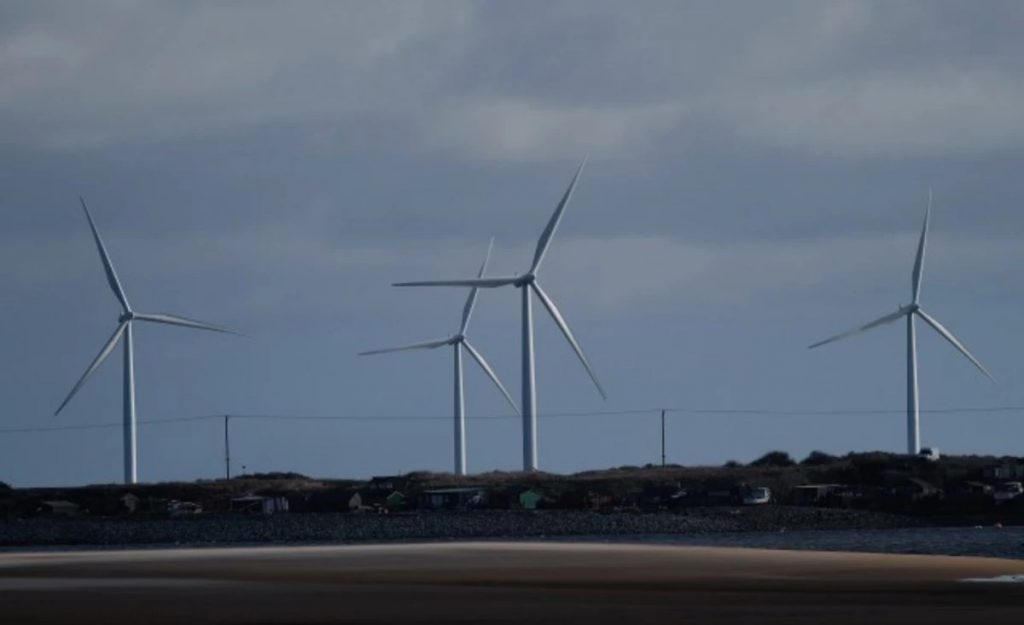The New York Power Authority recently held a hearing at the Holiday Inn in Downtown Binghamton for its drafted Renewables Strategic Plan.
Set forth by the inclusion of elements of the Build Public Renewables Act in the 2023-24 state budget, which mandates that three hearings be held, the Southern Tier hearing was one of 12 across the state. The act is championed by Public Power New York, a coalition of political and climate advocacy organizations, including chapters of Democratic Socialists of America, the Sunrise Movement and Food and Water Action.
Endorsed by labor unions across the state, the legislation enables the Power Authority to build publicly owned renewable energy with union jobs to keep the state on track with its green energy mandates. The strategic plan highlights how the agency will achieve its new renewable energy goals.
Public Power New York has called on the Power Authority to build 15 of the 20 gigawatts needed to meet their goal of reaching 70 percent renewable energy by 2030, which can include solar, wind, hydroelectric, geothermal and additional clean energy sources. They argue that the private sector will fail to meet the state’s renewable energy mandate, given low profit margins and rising raw material prices that make renewable energy projects too risky.
“With residents of the Southern Tier facing already unaffordable utility rates which are due to rise, more than ever, we need affordable, Public Power,” said Adam Flint, director of Clean Energy Programs at the Network for a Sustainable Tomorrow, in a press release. “NYPA’s draft proposal lacks the scope and ambition needed to meet the climate and affordability crises. We call on NYPA to expand the plan’s goals to 15GW, and to be sure every region of New York, including the Southern Tier, benefits from the jobs, economic development and low cost electricity this program will bring.”
At the Nov. 14 hearing, Public Power New York advocates and labor unions claimed the agency is not building enough renewable energy to meet New York’s climate goals and create a sufficient number of new union jobs. A report from Strategen Consulting and Public Power New York found that 20 additional gigawatts of renewable power must be built to reach the state’s climate goals by 2030.
Alex Patterson, the campaign coordinator of Public Power New York, alleged that the Power Authority’s decision to build 3.5 gigawatts of solar and wind energy originates from NYPA’s Republican chief executive, Justin Driscoll and the agency’s consultants from McKinsey & Company, who he said are “notorious for hollowing out public institutions and helping support private sector work.”
Vennela Yadhati, the Power Authority’s vice president for renewable project development, said a lack of state funding, less sunlight in New York compared to states like California and bureaucratic limitations contributed to its decision.
“NYPA went and built three-and-a-half gigawatts in just our first tranche,” Yadhati said. “I think that is actually very commendable, not because it’s my work, but because we know what it takes to build these projects, so we continue to look for opportunities that we can append to our pipeline.”
The public hearings come after 49 New York state legislators, including State Sen. Lea Webb ‘04, called on Gov. Kathy Hochul last year to direct the Power Authority to “build enough renewable projects” to meet the state’s climate goals as mandated by the Climate Leadership and Community Protection Act. They said the authority’s ability to finance projects at low interest with highly rated bonds makes it suited to build renewable energy without raising taxes.
The legislators praised a provision in the Build Public Renewables Act that subsidizes the energy bills of low- to moderate-income ratepayers, calling on the agency to build more renewables to provide bill relief to New Yorkers.
Public Power New York advocates and elected officials also called on the agency to prioritize SUNY and CUNY in their strategic plan by building renewable energy projects on campuses, facilitating renewable energy research and establishing workforce development programs at such institutions.
After the public comment period is complete, the agency will submit its final Renewables Strategic Plan to the governor and the state legislature by Jan. 31, 2025.
“The work hasn’t stopped with the particular first tranche,” Yadhati said. “We continue to identify more opportunities.”
Editor’s Note (11/26): A clarification was added to specify the provision included in the 2023-24 budget and the number of hearings held across the state.



